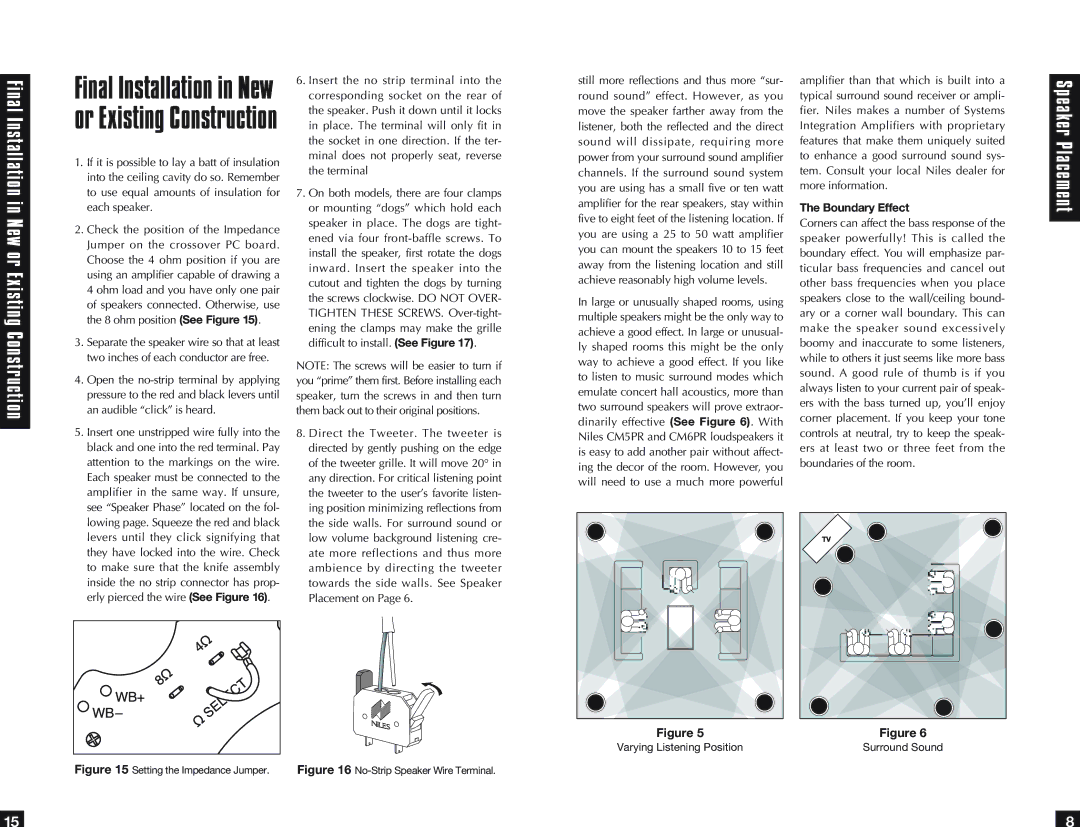CM6PR, CM5PR specifications
Niles Audio, a renowned name in the audio industry, introduces the CM5PR and CM6PR, both part of their premium in-ceiling speaker range designed to deliver exceptional sound quality in any environment. These models are engineered for customers who prioritize both aesthetic appeal and superior acoustics in their home audio systems.The CM5PR features a 5.25-inch polypropylene woofer, delivering a well-balanced sound profile that is rich in detail across the entire audio spectrum. Coupled with a 1-inch aluminum dome tweeter, it provides crisp highs and smooth midrange tones, making it an ideal choice for music enthusiasts and movie lovers alike. The CM6PR, on the other hand, ups the ante with a larger 6.5-inch polypropylene woofer, enabling it to deliver even deeper bass response. The tweeter remains consistent, ensuring both speakers provide uniform sound quality throughout different rooms.
One of the standout technologies behind the CM5PR and CM6PR is the patented IN-CEILING speaker design, which minimizes sound distortion while providing a broad dispersion pattern. This enables a more immersive listening experience, as the speakers can fill the room with clear sound regardless of the listener's position. The speakers are also equipped with a unique speaker grille that can be painted to match the room decor, making them blend seamlessly into any environment.
Furthermore, both models come with adjustable tweeter and woofer controls that allow users to customize the sound to their liking. This is particularly beneficial for rooms with challenging acoustics, where fine-tuning can lead to significantly improved audio performance.
Installation is simplified by their direct-connect system that allows for quick integration into existing audio systems. The CM5PR and CM6PR speakers are compatible with a wide range of amplifiers and receivers, making them versatile choices for various setups.
In terms of durability, Niles Audio has designed these speakers with a moisture-resistant construction, making them suitable for installation in humid areas such as kitchens and bathrooms without compromising sound quality.
In summary, the Niles Audio CM5PR and CM6PR speakers are exceptional choices for anyone looking to enhance their home audio experience while ensuring aesthetic harmony with their living spaces. With their advanced technologies and thoughtful design features, they set a standard in in-ceiling audio solutions.

